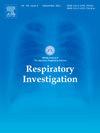身体活动对呼吸系统疾病的影响:现状和治疗意义
IF 2
Q2 RESPIRATORY SYSTEM
引用次数: 0
摘要
规律的身体活动(PA)调节了主要呼吸系统疾病发生、进展和症状的关键病理生理机制。值得注意的是,低每日PA和高久坐时间独立预测哮喘、慢性阻塞性肺疾病(COPD)、间质性肺疾病(ILDs)和冠状病毒后肺部后遗症的肺功能下降更快、生活质量更差和过早死亡。相反,有组织的运动训练——以及日益流行的、与生活方式相结合的“多动少坐”项目——可以改善呼吸困难、运动能力、气道和全身炎症以及医疗保健利用。大型队列分析证实了明确的剂量-反应关系:达到≥7500步/天或≥150分钟/周的中等至高强度活动产生最大的临床益处,即使对肺功能受损的个体也是如此。机制研究还表明,运动可以抑制哮喘患者的2型气道炎症,增强COPD患者的骨骼肌氧化表型,并抵消ild相关的降糖作用。最近的随机试验表明,肺康复可以提高纤维化ILD患者的5年生存率,而远程康复和游戏化智能手机指导可以在不影响疗效的情况下缩小治疗差距。此外,主要的国际指南,如2024年全球哮喘倡议和2025年全球慢性阻塞性肺疾病倡议,现在明确承认PA是一种“可治疗的特征”。然而,PA在常规护理中的应用仍然受到行为、环境和政策障碍的限制。未来的工作必须完善个性化PA处方,将可穿戴衍生指标整合到决策支持算法中,并测试与新兴生物制剂和抗纤维化药物的协同效应。本综述综合了当代证据,突出了未解决的问题,并为临床医生提供了实用的建议,旨在将PA推广纳入全面的呼吸护理途径。本文章由计算机程序翻译,如有差异,请以英文原文为准。
Impact of physical activity on respiratory disease: Current status and therapeutic implications
Regular physical activity (PA) modulates key pathophysiological mechanisms underlying the onset, progression, and symptoms of major respiratory diseases. Notably, low daily PA and high sedentary time independently predict faster lung function decline, poorer quality of life, and premature mortality in asthma, chronic obstructive pulmonary disease (COPD), interstitial lung disease (ILDs), and post-coronavirus disease lung sequelae. Conversely, structured exercise training—and the increasingly popular, lifestyle-integrated “move-more–sit-less” programs—improve dyspnea, exercise capacity, airway and systemic inflammation, and healthcare utilization. Large cohort analyses corroborate a clear dose-response relationship: attaining ≥7500 steps/day or ≥150 min/week of moderate-to-vigorous activity yields the greatest clinical benefit, even in individuals with impaired pulmonary function. Mechanistic studies also revealed that exercise dampens type-2 airway inflammation in asthma, enhances the skeletal muscle oxidative phenotype in COPD, and counteracts ILD-related deconditioning. Recent randomized trials have shown that pulmonary rehabilitation can improve 5-year survival in fibrotic ILD, while telerehabilitation and gamified smartphone coaching can close access gaps without compromising efficacy. Additionally, major international guidelines such as the Global Initiative for Asthma 2024 and Global Initiative for Chronic Obstructive Lung Disease 2025 now explicitly recognize PA as a “treatable trait.” Nevertheless, PA uptake in routine care remains limited by behavioral, environmental, and policy barriers. Future work must refine personalized PA prescriptions, integrate wearable-derived metrics into decision-support algorithms, and test the synergistic effects with emerging biologics and anti-fibrotic agents. This review synthesizes contemporary evidence, highlights unanswered questions, and offers pragmatic recommendations for clinicians aiming to embed PA promotion in comprehensive respiratory care pathways.
求助全文
通过发布文献求助,成功后即可免费获取论文全文。
去求助

 求助内容:
求助内容: 应助结果提醒方式:
应助结果提醒方式:


